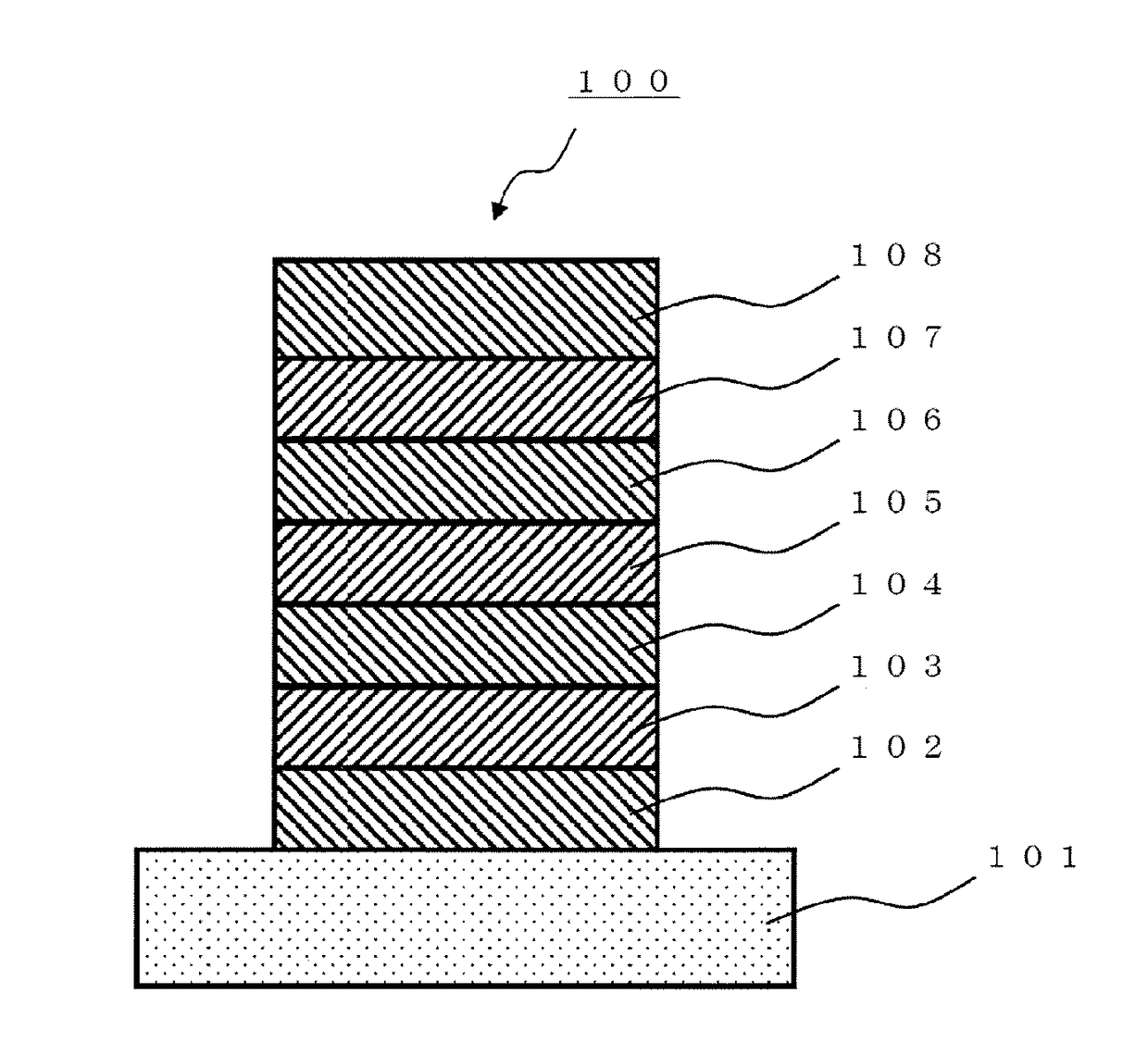Organic electroluminescent element
a technology of electroluminescent elements and organic compounds, which is applied in the direction of group 3/13 element organic compounds, semiconductor devices for light sources, lighting and heating apparatus, etc., can solve the problem of no description on a manufacturing method for other materials, and achieve excellent quantum efficiency and optimal light emission characteristics.
- Summary
- Abstract
- Description
- Claims
- Application Information
AI Technical Summary
Benefits of technology
Problems solved by technology
Method used
Image
Examples
examples
[0369]Hereinafter, the present invention will be described more specifically by way of Examples, but the present invention is not limited thereto. First, synthesis examples of a polycyclic aromatic compound and a multimer thereof will be described below.
Synthesis Example (1)
Synthesis of Compound (1-1152): 9-([1,1′-biphenyl]-4-yl)-5,12-diphenyl-5,9-dihydro-5,9-diaza-13b-boranaphtho[3,2,1-de]anthracene
[0370]
[0371]In a nitrogen atmosphere, a flask containing diphenylamine (37.5 g), 1-bromo-2,3-dichlorobenzene (50.0 g), Pd-132 (Johnson Matthey) (0.8 g), NaOtBu (32.0 g) and xylene (500 ml) was heated and stirred for 4 hours at 80° C., subsequently the temperature of the mixture was increased to 120° C., and the mixture was heated and stirred for three hours. The reaction liquid was cooled to room temperature, subsequently water and ethyl acetate were added thereto, and the mixture was partitioned. Subsequently, purification was performed by silica gel column chromatography (developing li...
synthesis example (
20)
Synthesis of Compound (1-2678): 3,6,14,17-tetramethyl-9,11-di-p-tolyl-4b,11,15b,19b-tetrahydro-9H-9,11,19b-triaza-4b,15b-diborabenzo[3,4]phenanthro[2,1,10,9-fghi]pentacene
[0468]
[0469]First, triphenylborane (0.730 g, 3.0 mmol) and boron tribromide (0.284 ml, 3.0 mmol) were added to N1,N1,N3,N3,N5,N5-hexakis (4-methylphenyl)-1,3,5-benzenetriamine (0.322 g, 0.5 mmol) and o-dichlorobenzene (3.0 ml) at room temperature in a nitrogen atmosphere in an autoclave, and then the mixture was heated and stirred for 20 hours at 260° C. Thereafter, N,N-diisopropylethylamine (1.55 ml, 9.1 mmol) was added thereto, and the mixture was filtered using a Florisil short pass column. The solvent was distilled off under reduced pressure, and a crude product was obtained. The crude product was washed using hexane, and a solid thus obtained was washed using ethyl acetate. Thus, a compound (0.188 g) represented by formula (1-2678) was obtained as a yellow solid.
[0470]The structure of the compound thus obta...
example 1
[0480]
[0481]A glass substrate (manufactured by Opto Science, Inc.) having a size of 26 mm×28 mm×0.7 mm, which was obtained by forming a film of ITO having a thickness of 180 nm by sputtering, and polishing the ITO film to 150 nm, was used as a transparent supporting substrate. This transparent supporting substrate was fixed to a substrate holder of a commercially available vapor deposition apparatus (manufactured by Showa Shinku Co., Ltd.), and a vapor deposition boat made of molybdenum and containing HI (hole injection layer material), a vapor deposition boat made of molybdenum and containing HAT-CN (hole injection layer material), a vapor deposition boat made of molybdenum and containing HT (hole transport layer material), a vapor deposition boat made of molybdenum and containing compound (3-1) (host material), a vapor deposition boat made of molybdenum and containing compound (1-1152) (dopant material), a vapor deposition boat made of molybdenum and containing ET-1 (electron tran...
PUM
 Login to View More
Login to View More Abstract
Description
Claims
Application Information
 Login to View More
Login to View More - R&D
- Intellectual Property
- Life Sciences
- Materials
- Tech Scout
- Unparalleled Data Quality
- Higher Quality Content
- 60% Fewer Hallucinations
Browse by: Latest US Patents, China's latest patents, Technical Efficacy Thesaurus, Application Domain, Technology Topic, Popular Technical Reports.
© 2025 PatSnap. All rights reserved.Legal|Privacy policy|Modern Slavery Act Transparency Statement|Sitemap|About US| Contact US: help@patsnap.com



